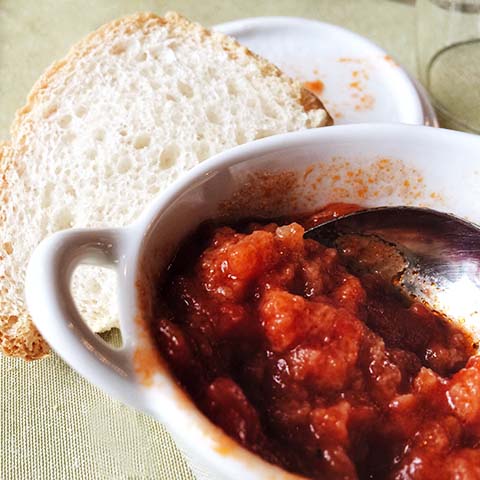Giulia Scarpaleggia is no stranger to the ins and outs of Tuscany, having lived in the region for more than a decade. It has been evident that she has been cooking up a storm from her kitchen, based on the sheer number of bone fide Italian recipes coming out from her blog Jul’s Kitchen. To this cooking instructor, Tuscany is a lot more than just the overcrowded squares of Florence and Siena. In this interview, Giulia left no stones unturned as she reveals her favourite eating spots, what a proper Tuscan meal is, and the other hill towns that you should visit apart from the obvious.

Photo: Juls’ Kitchen
What do you feel defines Tuscan cuisine?
The Tuscan cuisine that we know know is deeply influenced by cucina povera – peasant cooking of the previous century. Seasonal vegetables, beans and bread are staple ingredients. Stale bread is smartly reinvented in hearty recipes such as pappa al pomodoro, panzanella and ribollita.
What are some local dishes you feel travellers can’t leave Tuscany without trying?
It is strongly related to season. In Autumn, do not miss bruschetta – a char grilled bread rubbed with garlic and doused with olive oil. In Winter, ribollita is a must – a thick soup of stale read, beans, cavolo nero and other vegetables. Spring is all about fresh vegetables, like piselli alla fiorentina – peas with pancetta. Summer is the season of tomatoes, do not miss pappa al pomodoro and panzanella.
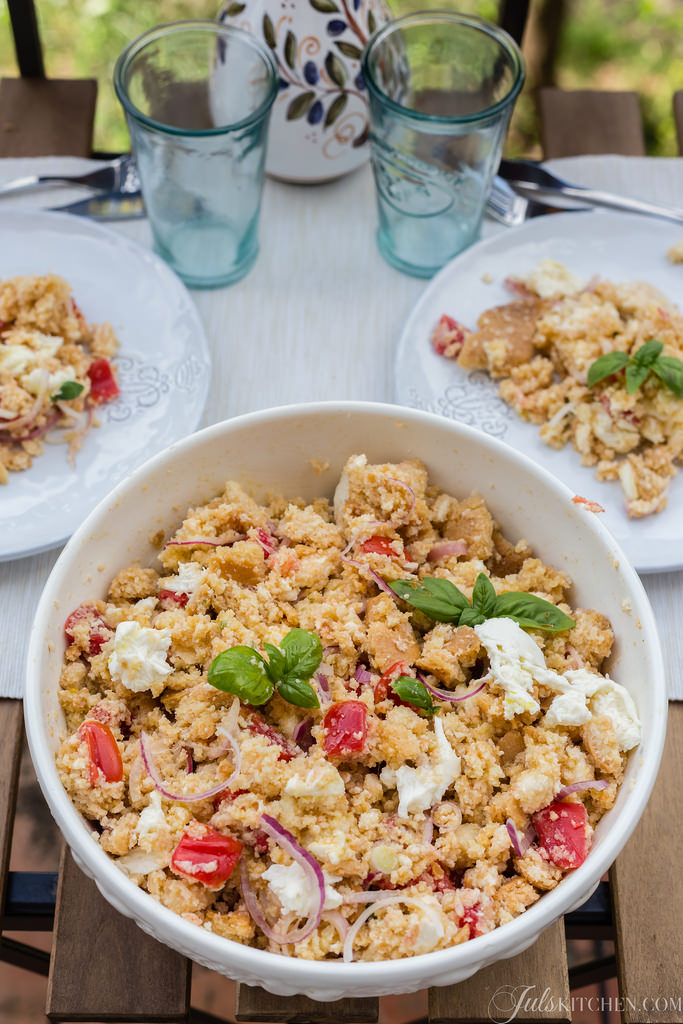
Tuscan panzanella with tomatoes and mozzarella. Photo: Juls’ Kitchen
Where are your favourite restaurants or cafés in Tuscany?
The cuisine of Agriturismo il Rigo in Val d’Orcia. Sbarbacipolla Biosteria and Bel Mi Colle in Colle val d’Elsa, Osteria Vecchio Mulino in Castelnuovo Garfagnana, Gino Cacino in Siena. So many great places.
Name one Tuscan dining etiquette most travellers miss
Do not eat pasta with your meat. They are two separate courses!

Photo: Juls’ Kitchen
When is your favourite time of the year to visit Tuscany?
My favourite months are October and November, when there are less tourists and the countryside is simply stunning. Plus it’s time for chestnuts, pumpkin, grapes and new olives. Nothing better!
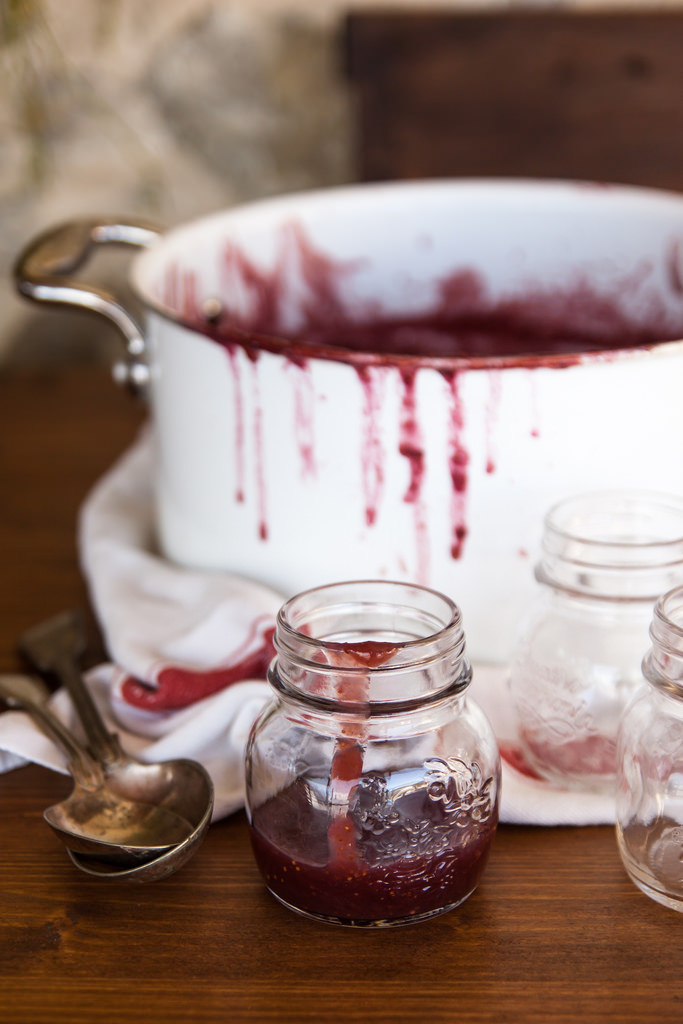
Photo: Juls’ Kitchen
What would you recommend travellers do to experience Tuscany as a local?
Shop at a local market, listen to what the vendors are suggesting and cook according to the season.
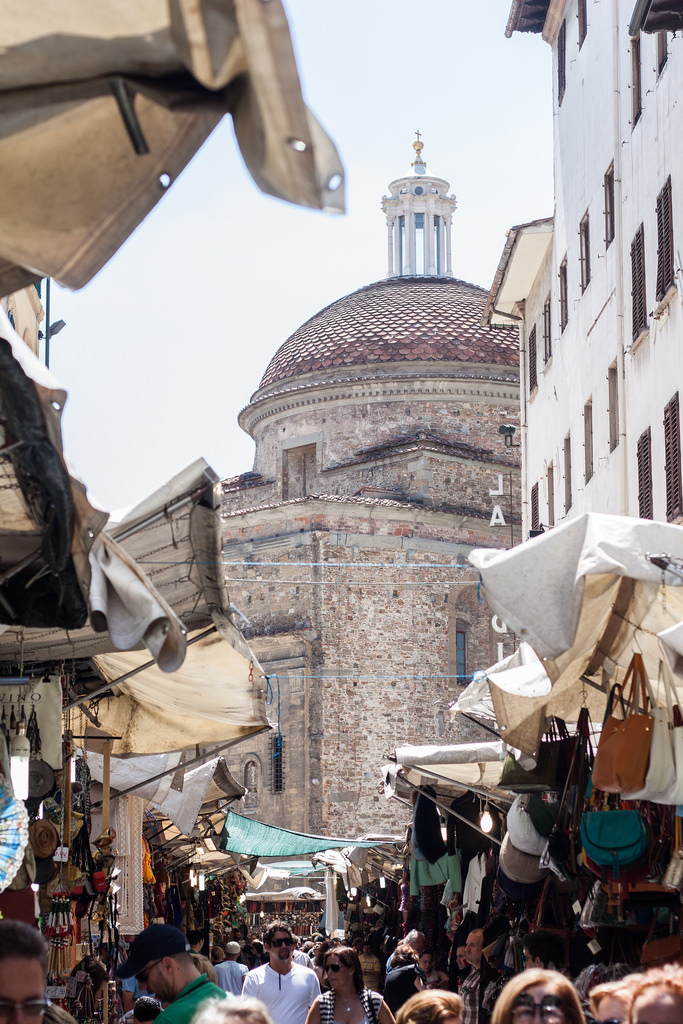
Photo: Juls’ Kitchen
Where are your favourite Tuscan hill towns?
Casole d’Elsa near Siena, Barga near Lucca and Pitigliano in Maremma.
Name one best kept secret of Tuscany
Osteria Livornese, in Montelupo Fiorentino, is an amazing restaurant to eat fish near Florence.
Where can we go to see your favourite view in Tuscany?
It’s the view from my bathroom, in the countryside of Colle Val d’Elsa. So fun! All my friends and all the guests of cooking classes love it!
What makes Italian cooking so unique?
The cooking style is extremely simple, the ingredients are left to speak for themselves. There’s no need for overcomplicating with sauces or too many ingredients. Recipes are inspired by seasonality.

Photo: Juls’ Kitchen
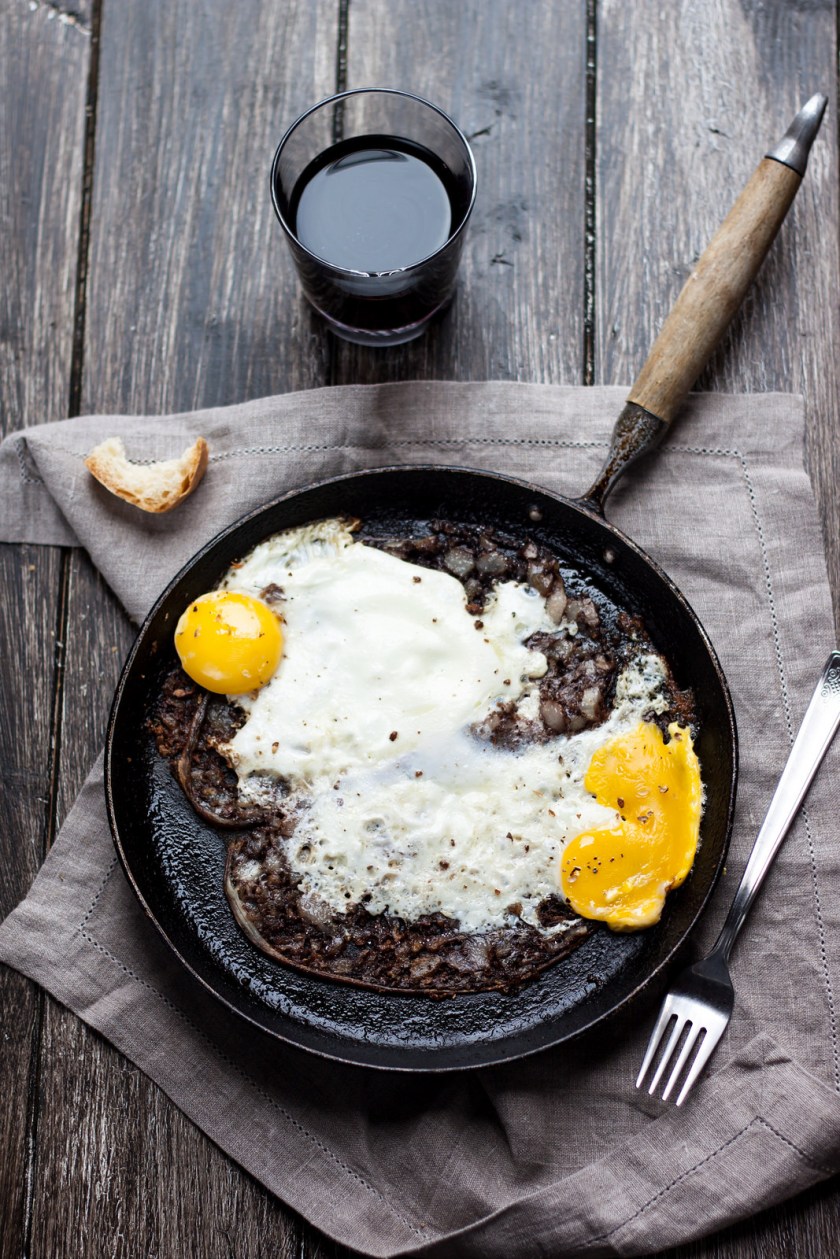
Fried eggs and buristo. Photo: Juls’ Kitchen
When it comes to food, where in the world is your favourite destination?
Except from Tuscany, I love London, where you can experience possibly any cuisine in the world. I’m a big fan!




